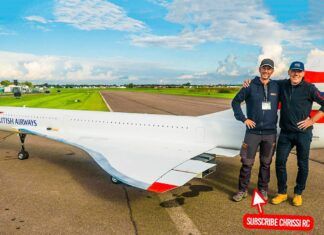
On March 3, 2011, a Dash 8 operated by Flybe between Exeter and Newcastle, UK, dropped a right main wheel on takeoff right in front of window-seated passengers, but it was Air Traffic Control that notified the crew, according to an AAIB report. The precise chronology of the event is not known, but passengers seated next to the high-wing’s landing gear clearly saw the wheel fall shortly after takeoff. Tower controllers also witnessed something fall from the aircraft and alerted the pilot. The pilot then directed cabin crew to investigate. At that time passengers told the senior flight attendant what they’d seen. With confirmation, the pilot issued a Mayday, turned back to Exeter and prepared for landing while at least one passenger took pictures of the landing gear.
The cockpit crew consulted with the airline’s chief pilot and was instructed to touch down on the good left main first and lower the now handicapped right gear (one wheel remained) as slowly as possible. The aircraft landed successfully on the runway with its remaining tires. All aboard escaped injury, but the aircraft was evacuated while still on the runway. According to the AAIB, a seized bearing had caused damage that led to the wheel’s departure. It noted that the captain had inspected the gear during pre-flight and did not notice anything out of the ordinary. According to the AAIB, the nature of the problem would have been difficult to detect during a visual pre-flight inspection. The AAIB has issued safety actions as a result of the incident.

































